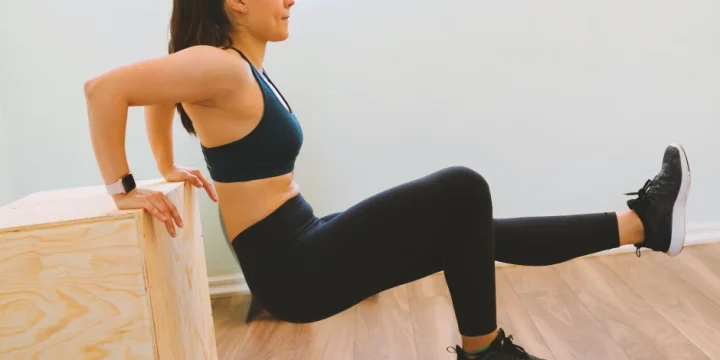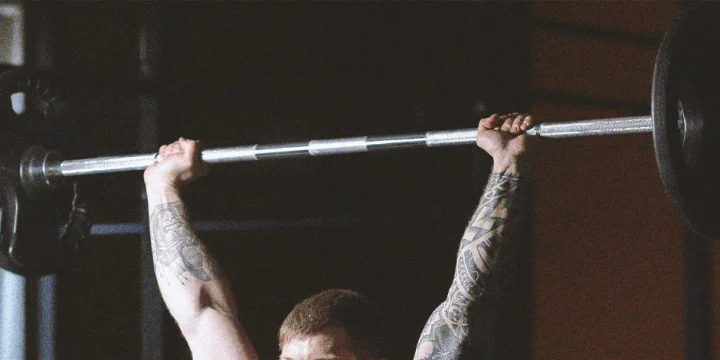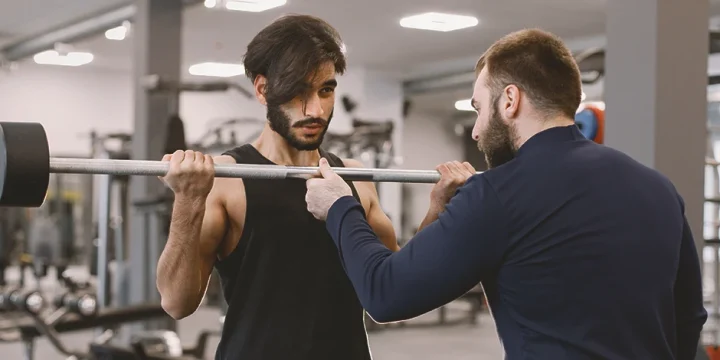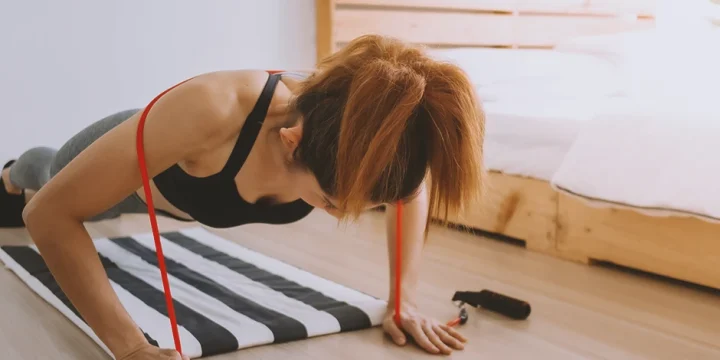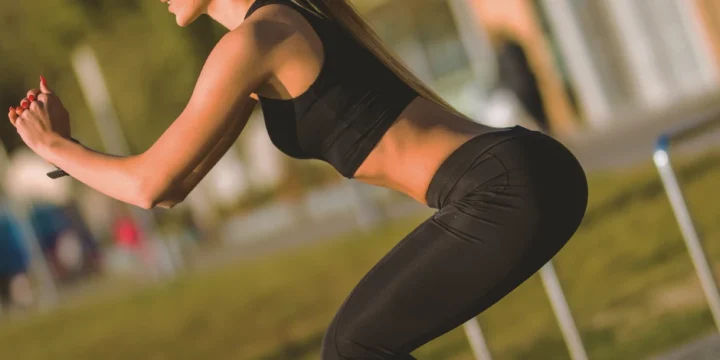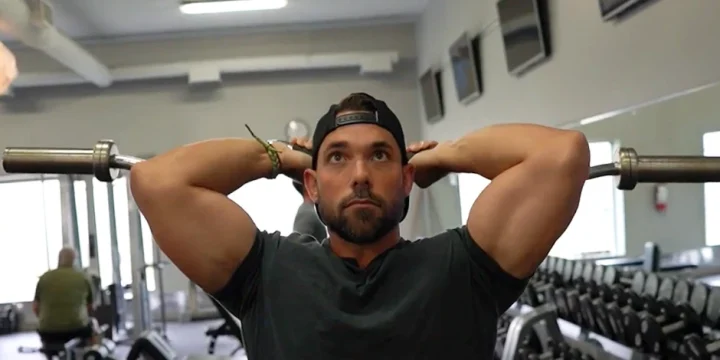The glutes and hamstrings are power-generating muscles needed for unilateral movements such as jumps and sprints and are vital contributors in exercises like the deadlift.
When strengthening these muscle groups, my go-to unilateral exercise is the split squat. It works the glutes, hamstrings, abductors, quads, abdominals, and calves while enhancing balance.
Drawing on my expertise as a fitness professional, I dedicated weeks to extensive research to find out how to execute the perfect rep. I also gathered expert tips to maximize the benefits of this exercise and some split squat variations that can be incorporated into your workout routine to stimulate muscle growth.
Quick Summary
- To perform the split squat exercise, start in a lunge position, then lower your body by flexing both knees and pushing through your front foot to return to the starting position.
- Some variations of split squats include the rear-foot or front-foot elevated versions, jumping split squats, goblet split squats, Zercher split squats and pistol squats.
- According to the International Journal of Sports Medicine, the challenge of maintaining balance while performing split squats activates your core muscles better than regular squats.
- In my view, the split squat is the unsung hero of lower body workouts, offering a unique blend of strength, stability, and endurance training.
How to Perform Split Squats?

To perform the standard split squat with proper form:
- Stand upright and tall, keeping your shoulders back, core engaged, and spine neutral.
- Lunge forward until your front leg forms a 90-degree angle and your back leg touches the floor. Do not let your front knee reach past your toes.
- Elevate yourself by pushing through your leading leg with each repetition.
- Alternate legs and repeat until you complete three sets of twenty reps.
Common Mistakes and How to Fix Them

- Excessive heel dominance - Avoid being too heel dominant by emphasizing driving through your big toe during the split squat, ensuring a more balanced distribution of pressure through the foot.
- Inability to properly engage the hips - Sit back during the movement, aiming to feel a stretch in your hips so that you can ensure the proper depth and activation of the glutes.
- Improper load placement - Challenging your core: Hold the weight in the opposite hand of the working leg (contralateral load placement) to engage your core more, or hold the weight on the same side as the working leg (ipsilateral load placement) to enhance hip stability.
- Incorrect starting position - Make sure your back foot is resting on a bench about knee height, and adjust the position of your feet to maintain an upright torso.
- Improper leg position and knee alignment - Aim to stop your front leg at a 90-degree angle, ensuring your front knee stays behind your front toes.
- Poor upper body posture - To improve your upper body posture, avoid rounding your shoulders or leaning excessively forward or backward. Instead, focus on engaging your core, keeping your hips squared, and facing forward throughout the exercise.
These adjustments not only correct form but also mirror techniques used in rehabilitation programs, where split squats are often employed to recover from lower body injuries.
Tips

- Enhance grip strength - Use lifting straps or incorporate grip-strengthening exercises to improve your ability to hold onto the weights securely.
- Consider bilateral loading - If you're aiming for heavier split squats to increase leg strength and size, try using dumbbells in both hands to lower your center of gravity, enhance balance, and allow for a more significant total load.
- Prioritize split squats in your workout - Place split squats earlier in your training to challenge yourself with heavier weights or higher volume, as you'll have more energy and focus.
- Elevate your rear foot - Intensify the exercise by placing your back foot on an elevated surface, shifting more of your body weight onto your working leg.
- Manipulate exercise tempo - Slow down the eccentric (lowering) portion of the split squat or add pauses in critical positions to train stability and push yourself closer to muscle failure in a controlled and challenging manner.
- Mindful foot placement - Keep your feet hip-width apart, imagining you're standing on parallel train tracks rather than in a straight line, to help maintain balance and stability during the movement.
"If improving your split squat is a priority, place it earlier in your workout. Instead of waiting until the last part of your day to perform the dreaded split squat, try placing them first or second. Attacking the lift earlier in your workout will allow you to challenge yourself with greater load or volume than you normally would later in the day."
- Eric Bugera, Personal Trainer
What Are the Variations of Split Squats?

Drawing from my experience, split squat variations like the Bulgarian split squat, jumping, goblet, Zercher, and pistol squats each target unique muscle groups.
For example, pistol squats excel in enhancing neuromuscular coordination and balance, crucial in advanced athletic training.
1. Bulgarian Split Squats
There are many Bulgarian split squat variations you can try; among our favorites is the dumbbell Bulgarian split squat:
- Grab a pair of dumbbells and position them at your sides.
- Stand two to three feet away from a weight bench.
- Place the top of your left foot on the weight bench keeping your hips in line with your toes.
- Bring your left knee down, ensuring most of the weight is in the front leg. Avoid rocking your weight back, and make sure your knee doesn't go way forward past your toes.
- Press through your right heel to come up.
- Repeat until you finish three sets of fifteen reps and switch to the other leg.
"Generally, you need to place your front foot in a position so that, when you bend both knees, your front knee doesn't come over your front toes. Standing closer to the bench will also put greater emphasis on your quads. Don't stand too close though or you risk triggering knee pain."
- Fionna Scott, Corrective Exercise Specialist
2. Goblet Split Squat
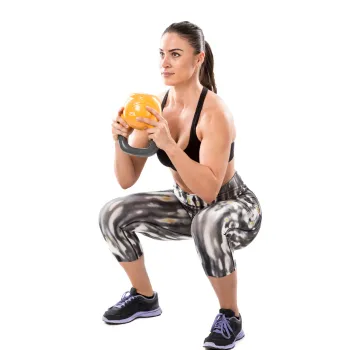
How to do this exercise:
- Hold a dumbbell on the heels of the hands with your finger to the outside, making the shape of a goblet with your forearm and hands. Ensure you keep holding the dumbbell in front of your chest.
- Step backward with one leg, ensuring the heel stays off the floor. The majority of your body weight should be on your front heel.
- Lunge down until your rear knee is about to touch the floor.
- Repeat until you complete three sets of fifteen reps and alternate to the other leg.
Learn More: Crush Grip Goblet Squat: How-to Guide
3. Pistol Squat
How to do this exercise:
- Stand with your feet shoulder-width apart.
- Raise one leg off the floor and extend it in front of you.
- Lower yourself while keeping your leg lifted. Position your arms extended in front of you for balance.
- Push through your grounded foot to rise back up to return to the starting position.
4. Zercher Split Squat
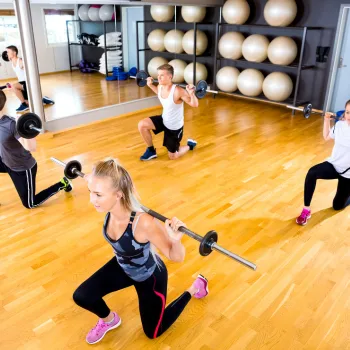
How to do this exercise:
- Set the bar slightly lower than you do for other squat variations.
- Put the bar in the crease of your elbows, maintaining tension through the upper back to prevent yourself from losing position.
- Perform a regular split squat, your feet roughly hip-width apart right to left and far enough front to back.
- Drop the back knee down to the floor, maintaining control and stability.
- Push through your front foot to rise back up, repeat as many reps as possible on one side, and then match with the other leg.
"The first mistake to avoid is shooting the hips backward when shifting from the eccentric to concentric movement patterns. If this happens, then you're losing tension in the legs and breaking form to most likely accommodate for load, or you may be strengthening faulty movement patterns."
- Jake Boly, Training Editor
What Are the Split Squat Benefits?

From my practical experience working with various clients, I've seen split squats boost lower body strength, enhance flexibility and muscle growth, improve grip strength, and alleviate back pain.
Here are other benefits:
- Increased lower body strength - Split squats are efficient for strengthening your quads and glutes. As per WebMD, they demand stronger muscular engagement and activate specific muscle groups to a larger extent by isolating one leg at a time [1].
- Increased grip strength - Performing weighted split squats can improve grip strength, which can enhance your performance in exercises like chin-ups.
- Promoted muscle growth - As you near failure in split squats, the mechanical tension on your muscles intensifies, promoting muscle growth even with lighter weights. Additionally, they are an effective exercise for addressing strength imbalances and focusing on the weak areas.
- Improved flexibility and mobility - Split squats promote stability and range of motion due to the single-leg stance.
- Enhanced core activation - According to the International Journal of Sports Medicine, the challenge of maintaining balance while performing split squats activates your core muscles better than regular squats [2].
- Prevented spine pain - Split squats help minimize strain on the spine by distributing more weight onto the front leg and reducing the load on the spine.
- Increased lower back strength - Incorporating exercises like squats into your routine can be beneficial in increasing both strength and hypertrophy of the back extensors, promoting better stability and reducing the risk of lower back discomfort or strain, as shown by research published by the Journal of Strength and Conditioning Research [3].
Related Posts:
FAQs
What Muscles Do Split Squats Work?
Split squats work the quadriceps, glutes, abductors, hamstrings, calves, and abdominal muscles. Engaging these muscle groups increases flexibility, lower body strength, and overall functional fitness.
How Often Should I Do Split Squats?
You should do split squats at least twice a week in your leg day routine. Depending on your specific training program and goals, you may choose to perform split squats more frequently. However, it is crucial to allow for at least one recovery day between sessions to ensure proper muscle recovery.
References:
- https://www.webmd.com/fitness-exercise/how-to-do-split-squats
- https://www.thieme-connect.de/products/ejournals/abstract/10.1055/s-0034-1382016
- https://journals.lww.com/nsca-jscr/fulltext/2008/01000/trunk_muscle_activity_during_stability_ball_and.15.aspx
About The Author
You May Also Like
